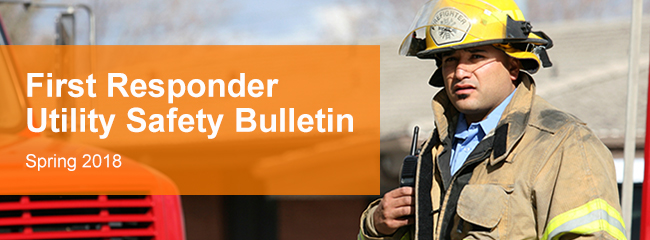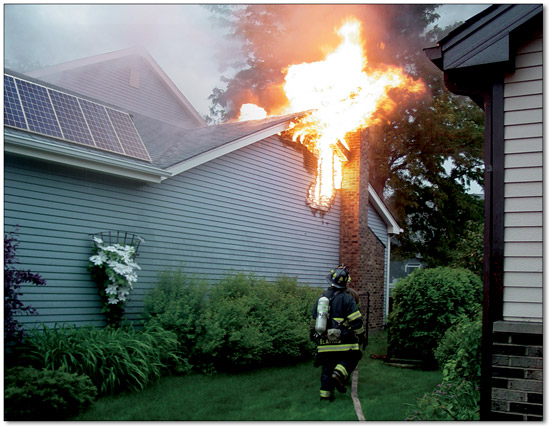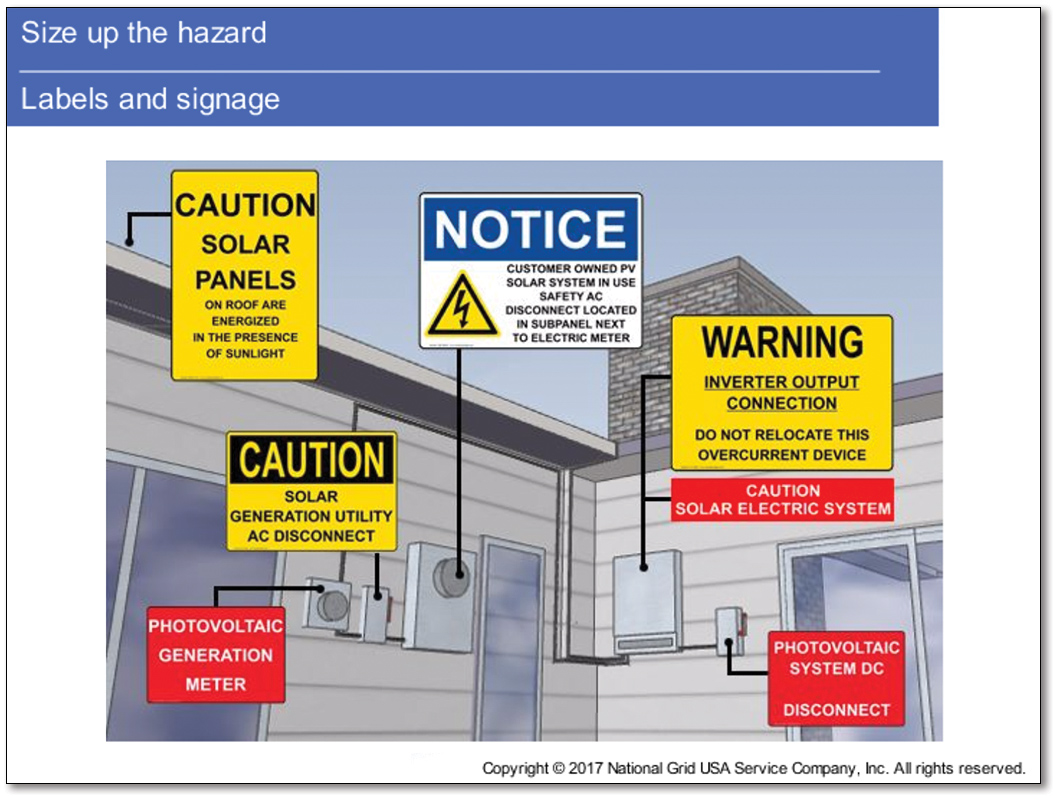Connect with us.

Solar-involved incidents: Are you prepared to respond?When asked, most firefighters will tell you that there are plenty of things that can keep them up at night. But the only thing that really scares them is the inability, whether real or perceived, to do their job. There are many things that can contribute to this fear: lack of proper, quality equipment and training. National Grid can help with the latter.
More education and training is needed to combat misconceptions and apprehension when fighting fires with solar technology involved There are many issues involving rooftop solar panels and the extent to which this equipment presents hazards for firefighters. It is, however, difficult to accurately assess the scope of the problem since the available data for fires involving solar panel is largely anecdotal. Many experts agree that solar panel fires are rare and there is no evidence to suggest that the risks are any greater than with other types of electrical equipment. Let’s focus on what we do know:
A widely publicized incident occurred in 2013 when a Dietz and Watson refrigeration warehouse in Delanco, NJ, burned to the ground because firefighters were unsure how to access the roof safely. The warehouse had 7,000 solar panels on its 300,000 square-foot roof. According to the fire chief on the scene, there was no clear shut-off switch that would de-energize the solar panels, presenting a risk of electrocution. In addition, there was a question about where a hole in the roof could be safely cut. Traditional firefighting protocols call for ventilating toxic gases by cutting a hole in the roof. This also improves visibility and survival of the structure, allowing firefighters to locate the seat of the fire and rescue trapped victims. Shut-off switchesOne of the problems with solar panels is that they continuously generate electricity, rain or shine, which can be difficult to switch off. De-energizing panels can be problematic for first responders. If the solar array is connected to a micro-inverter, the system can be shut off from the ground but this only de-energizes the wiring below the roof; the solar panels are still electrified. Panels can be covered with a large tarp but this is impractical when fighting a fire. Regulations for breaker switches are only required in certain states; in other parts of the country, these statutes are still in the development stage. Rules for providing better signage on solar-powered buildings are inconsistent from state to state. Consequently, there are thousands of solar arrays across the country that cannot be easily shut off in an emergency situation. Codes and trainingAlthough the prevalence of rooftop solar arrays is soaring, first responder training to deal with solar panels is struggling to keep pace. In 2012, the National Fire Protection Association and the International Code Council began incorporating language about photovoltaic (PV) solar panel installation into their fire codes. Modern fire and electric codes require enough space between rooftop solar panels for firefighters to walk safely. These guidelines also recommend clear signage on all PV solar panels and wires and rapid shutdown systems that can quickly de-energize solar arrays. Not every state and county, however, is implementing the most recent version of the codes. Some are not using them at all. In Oklahoma City, for example, solar panels are a rarity so the fire department has not adopted any new protocols for dealing with fires with PV solar systems. In Vermont, where rooftop installations have become increasingly popular, the Vermont Fire Academy has trained more than 700 firefighters in the past year to respond to fires involving PV solar arrays. Solar panel manufacturers are also developing safety practices for their products. Train to respond safely to incidents involving PV solar systems While the industry is slow to respond, we enlisted the help of your peers and industry experts to develop FREE training just for you. Traditional firefighting tactics are not sufficient when responding to incidents involving PV solar systems. Unfortunately, the availability of formalized education in this area is limited, can be expensive and often not produced from a first responder’s perspective. National Grid announces the addition of PV solar training modules to our online electrical safety training certification program. The new training modules are self-paced, and when successfully completed with the other electrical safety e-learning modules, a personalized certificate of completion will be issued.
Keep yourself, your team and the public safe. Register today, and complete your utility safety training. Visit firstresponder.ngridsafety.com.
|
||||||||||||||||||||||||||||||||||||||


